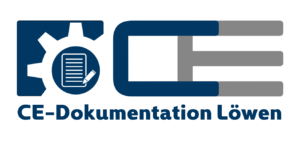Risk assessment and protective measures
- 3 Risk assessment
(1) Before using work equipment, the employer shall assess the hazards that arise (risk assessment) and derive necessary and appropriate protective measures from this assessment. The presence of a CE marking on work equipment shall not release the employer from the obligation to carry out a risk assessment. Sentence 1 shall only apply to elevator systems if they are used by an employer within the meaning of § 2 (3) sentence 1.
(2) The assessment shall include all hazards arising from the use of work equipment, namely
- the work equipment itself,
- the working environment and
- the work objects on which activities are carried out with work equipment.
The risk assessment must take particular account of the following:
the suitability for use of work equipment, including ergonomic, age-appropriate, and age-related design- the safety-related, including ergonomic, relationships between the workplace, work equipment, work processes, work organization, work sequence, working time and work task
- the physical and psychological stresses to which workers are exposed when using work equipment,
- foreseeable operational disruptions and the risks associated with measures to eliminate them.
(3) The risk assessment shall already be started before the selection and procurement of the work equipment. In particular, the suitability of the work equipment for the intended use, the work processes and the work organization shall be taken into account. The risk assessment shall only be carried out by competent persons. If the employer themselves do not have the relevant knowledge, they must seek expert advice.
(4) The employer must obtain the information necessary for the risk assessment. This includes in particular the rules and findings, instructions for use and operating instructions announced in accordance with § 21 (6) No. 1, as well as the findings from occupational health and safety precautions available to them. The employer may adopt this information provided that it is applicable to the work equipment, working conditions and procedures in their company. When obtaining information, the employer may assume that the information supplied by the manufacturer of the work equipment is correct, unless they have other knowledge.
(5) When determining the protective measures, the employer may use existing risk assessments, including equivalent documents supplied by the manufacturer or distributor, provided that the information and specifications in this risk assessment correspond to the work equipment, including the working conditions and procedures, in their own establishment.
(6) The employer shall determine and specify the type and scope of required inspections of work equipment and the periods of periodic inspections in accordance with §§ 14 and 16 unless this ordinance already contains corresponding specifications. Sentence 1 shall also apply to elevator systems. The periods for the periodic inspections shall be determined in such a way that the work equipment can be used safely until the next specified inspection. When determining the periods for the periodic inspections in accordance with §14 (2) sentence 1 for the work equipment specified in Annex 3, the inspection periods specified there must not be exceeded. When setting the periods for the periodic inspections in accordance with § 16, the maximum periods specified in Annex 2 section 2 No. 4.1 and No. 4.3, section 3 No. 5.1 to No. 5.3 and section 4 No. 5.8 in conjunction with Table 1 shall not be exceeded unless otherwise specified in the said Annexes. Furthermore, the employer shall determine and specify the requirements to be met by the persons qualified to carry out the inspection who are to be commissioned by them to inspect work equipment in accordance with §§ 14, 15 and 16.
(7) The risk assessment shall be reviewed regularly. The state of the art must be taken into account. If necessary, the protective measures for the use of work equipment must be adapted accordingly. The employer must immediately update the risk assessment if
- safety-relevant changes in working conditions, including changes to work equipment, make this necessary
- new information is available, in particular findings from accidents or occupational health precautions, or
- the examination of the effectiveness of the protective measures pursuant to § 4 paragraph 5 has shown that the protective measures established are not effective or are insufficient.
If the review of the risk assessment shows that no updating is necessary, the employer shall make a note of this in the documentation pursuant to section 8, stating the date of the review.
(8) The employer must document the result of their risk assessment before using the work equipment for the first time. The following must be stated as a minimum
- the hazards arising from the use of work equipment
- the protective measures to be taken,
- how the requirements of this ordinance are complied with if there is a deviation from the rules and findings announced in accordance with § 21 (6), No. 1,
- the type and scope of the required tests and inspections as well as the periods of periodic inspections (paragraph 6, sentence 1) and
- the result of the review of the effectiveness of the protective measures pursuant to § 4 paragraph 5.
The documentation may also be in electronic form.
(9) If the employer makes use of § 7 (1) and the risk assessment shows that the requirements under § 7 (1) are met, documentation of these requirements and of any protective measures taken is sufficient.
